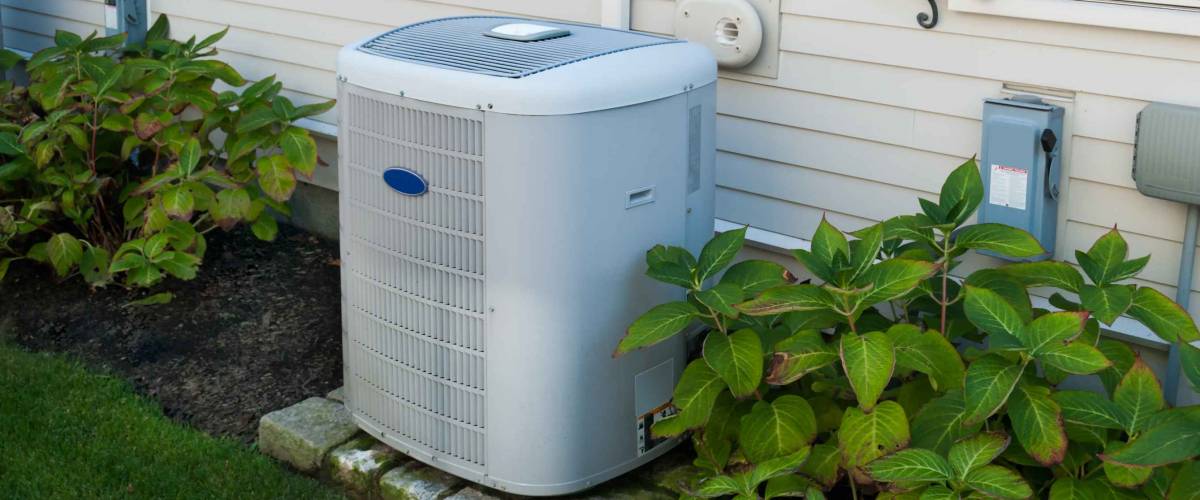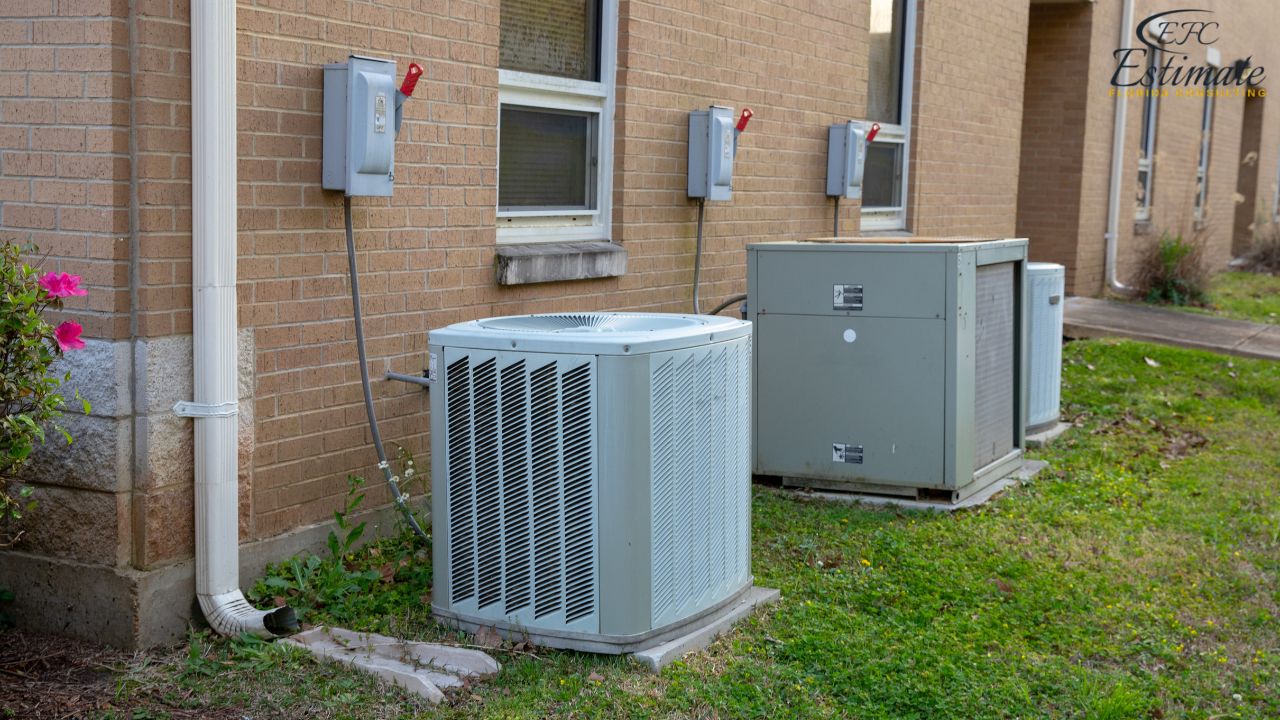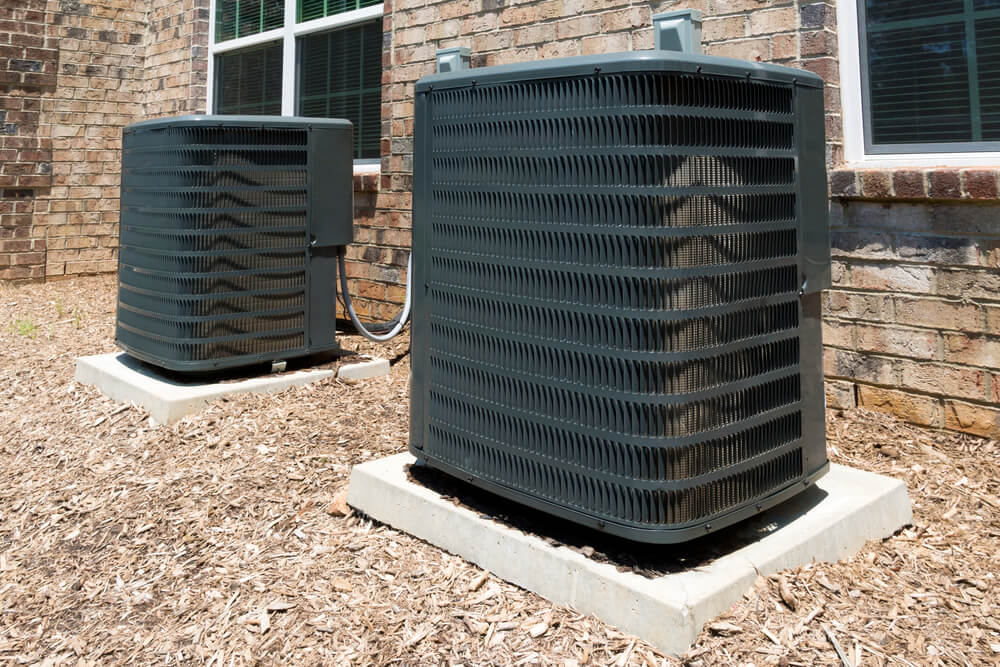How Much To Put Central Air In Old House

Thinking about adding central air conditioning to your older home? It's a fantastic upgrade for comfort, but the cost can vary significantly depending on several factors. This guide breaks down the expenses involved and helps you understand what to expect.
Understanding the Challenges of Installing Central Air in an Old House
Older homes often present unique challenges compared to newer constructions. These factors can directly impact the cost and complexity of installing a central AC system:
- Lack of Existing Ductwork: This is the biggest hurdle. Many older homes rely on radiator heating and lack the ductwork needed for forced-air cooling.
- Insulation Issues: Older homes often have poor insulation, meaning your new AC system will work harder and consume more energy.
- Asbestos: Be extremely cautious when working in older homes. If you suspect asbestos, especially around ductwork or insulation, stop immediately and contact a qualified professional.
- Electrical System Limitations: Your electrical panel might need an upgrade to handle the additional load of an AC unit.
- Space Constraints: Finding suitable locations for the indoor and outdoor units can be tricky.
Cost Breakdown: What to Expect
The total cost of installing central air in an older home typically ranges from $3,000 to $15,000+. This is a wide range, and the final price depends on the specific work required. Here’s a detailed look at the individual components:
Ductwork Installation: The Major Expense
If your home lacks ductwork, this will be the most significant expense. There are several options:
- Traditional Ductwork: This involves installing rigid or flexible ducts throughout your home. This is the most effective but also the most invasive and expensive. Expect to pay $2,000 - $8,000+ depending on the size of your home and the complexity of the installation.
- Mini-Duct High-Velocity Systems: These systems use smaller, flexible ducts that can be more easily routed through walls and ceilings. They are less intrusive than traditional ductwork but can be more expensive to install. Expect to pay $3,000 - $10,000+.
- Ductless Mini-Split Systems: These systems don’t require ductwork at all. They consist of individual indoor units connected to an outdoor compressor. Each indoor unit cools a specific zone, allowing for customized temperature control. They are a good option if you only want to cool certain areas or if ductwork installation is impossible. Expect to pay $2,000 - $5,000 per indoor unit installed, including the outdoor unit.
Air Conditioning Unit: Choosing the Right Size and Type
The size of your AC unit is measured in BTUs (British Thermal Units). A unit that's too small won't adequately cool your home, while a unit that's too large will cycle on and off frequently, leading to wasted energy and poor dehumidification. An HVAC professional can perform a Manual J load calculation to determine the correct size for your home.
Expect to pay $1,500 - $5,000+ for the AC unit itself, depending on the size and efficiency (SEER rating).
Electrical Upgrades: Ensuring Sufficient Power
Older homes may have outdated electrical panels that can't handle the additional load of an AC unit. Upgrading your panel can cost $800 - $2,500+, depending on the extent of the upgrade.
Labor Costs: Hiring a Qualified Professional
Labor costs can vary depending on your location and the complexity of the installation. Get multiple quotes from licensed and insured HVAC contractors. Expect to pay $50 - $150+ per hour for labor.
Permits and Inspections: Following Local Regulations
Most municipalities require permits for HVAC installations. These permits ensure that the work is done safely and up to code. Expect to pay $50 - $500+ for permits and inspections.
DIY Considerations: What You Can (and Can't) Handle
Some aspects of central air installation are suitable for DIYers, while others should be left to professionals. Here's a breakdown:
DIY Tasks (with caution):
- Improving Insulation: Adding insulation to your attic, walls, and crawl spaces can significantly improve the efficiency of your AC system.
- Sealing Air Leaks: Use caulk and weather stripping to seal air leaks around windows, doors, and other openings.
- Cleaning Existing Ductwork: If you have existing ductwork, cleaning it can improve airflow and efficiency.
Tasks Best Left to Professionals:
- Installing Ductwork: This requires specialized tools and knowledge to ensure proper airflow and prevent leaks.
- Installing the AC Unit: This involves working with refrigerant, which requires EPA certification. Incorrect installation can damage the unit and pose a safety hazard.
- Electrical Work: Working with electricity is dangerous and should only be done by a qualified electrician.
- Refrigerant Handling: The EPA requires technicians who handle refrigerant to be certified.
Troubleshooting Common Problems (After Installation)
Even with a professional installation, problems can sometimes arise. Here are some common issues and how to troubleshoot them:
- AC Not Cooling: Check the thermostat settings, air filter, and circuit breaker. If these are all okay, call a professional.
- Uneven Cooling: Check for blocked vents or duct leaks. Adjust vent dampers to balance airflow.
- Noisy Operation: Check for loose screws or debris in the fan. If the noise is unusual or persistent, call a professional.
- Water Leaks: Check the condensate drain line for clogs.
Safety First: Essential Precautions
- Turn off the power: Before working on any electrical components, turn off the power at the circuit breaker.
- Wear appropriate safety gear: Wear safety glasses, gloves, and a dust mask when working with insulation or ductwork.
- Work with a partner: Especially when lifting heavy objects or working in confined spaces.
- Asbestos Awareness: Be extremely careful when working in older homes. If you suspect asbestos, especially around ductwork or insulation, stop immediately and contact a qualified professional. Do not attempt to handle asbestos yourself.
Estimating Your Project: Key Factors
To get an accurate estimate for your project, consider these factors:
- Home Size: Larger homes require larger AC units and more extensive ductwork.
- Home Layout: Complex layouts with multiple stories or awkward angles can increase the cost of ductwork installation.
- Insulation Levels: Poor insulation will require a larger AC unit and higher energy bills.
- Local Climate: Hotter climates require more powerful AC units.
- Contractor Rates: Get quotes from multiple contractors to compare prices.
Long-Term Benefits of Central Air
While the initial investment can be significant, central air conditioning offers numerous long-term benefits:
- Improved Comfort: Enjoy consistent and comfortable temperatures throughout your home.
- Increased Property Value: Central air can increase the value of your home.
- Improved Air Quality: Central air systems can filter allergens and pollutants from the air.
- Energy Efficiency: Newer AC units are more energy-efficient than older models, leading to lower energy bills.
Alternatives to Traditional Central Air
If central air is too expensive or impractical, consider these alternatives:
- Window AC Units: These are a budget-friendly option for cooling individual rooms.
- Portable AC Units: These units can be moved from room to room and don't require permanent installation.
- Ductless Mini-Split Systems: As mentioned earlier, these systems are a good option if you only want to cool certain areas or if ductwork installation is impossible.
Installing central air in an old house is a complex project, but with careful planning and the help of qualified professionals, you can enjoy the comfort and benefits of central air conditioning for years to come.
When to Call a Professional: A Recap
Here's a quick guide on when to call a professional HVAC technician:
- Installing ductwork or an AC unit.
- Working with refrigerant.
- Performing electrical work.
- Suspecting asbestos.
- Troubleshooting complex AC problems.
- If you are uncomfortable or unsure about any aspect of the installation or repair.
By understanding the costs, challenges, and options involved, you can make an informed decision about installing central air conditioning in your older home.








:max_bytes(150000):strip_icc()/CentralAC-51a9e6136f9c470e8390d9b4d9362a60.jpg)

